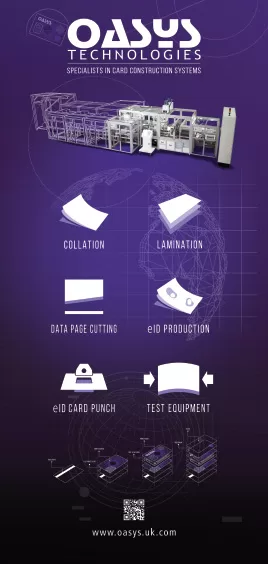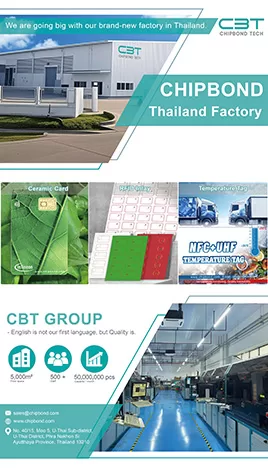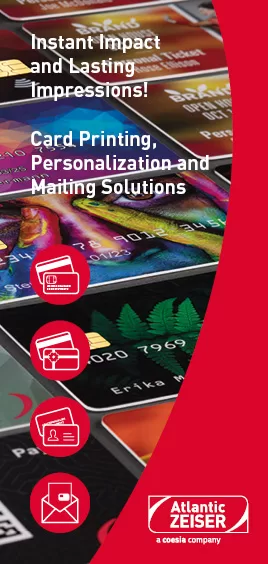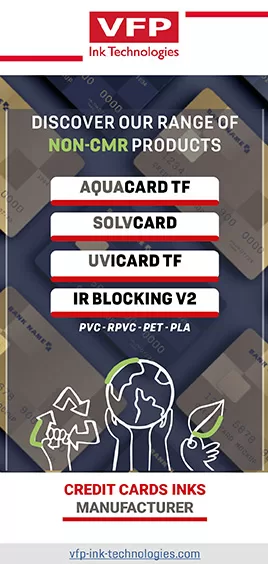
by Jennifer Kohlhepp | CM Magazine Featured
Card Design Creativity
 By Dave Tushie, Magellan Consulting, Inc., ICMA Standards and Technical Representative
By Dave Tushie, Magellan Consulting, Inc., ICMA Standards and Technical Representative
Creativity, as some have defined it, is the act of turning new and imaginative ideas into reality. Creativity is characterized by the ability to perceive the world in new ways, to find hidden patterns, to make connections between seemingly unrelated phenomena and to generate solutions.
In the early years of financial transaction cards, manufacturers held creativity in check as the brands defined the “standard” card parameters that were permitted for use on their cards. These parameters were developed in their laboratories and ratified and published by the ANSI/INCITS and ISO Standards committees. The type and location of cardholder data for instance was specified for uniformity and machine readability, not for any marketing advantage. Everyone was happy with this arrangement and there were no problems that required a creative solution. Then along came gift cards. For the first time, a card and its packaging material had to not just provide access to funds, but to sell themselves directly off the J-hook in a retail marketplace. Card marketing was promoted to the driver’s seat making changes in the look and feel of the product. For every idea that proposed a better marketing solution, the question came back, why not?
The door was open to creative solutions that would enhance “binding” the card to the cardholder and thus providing the issuer with an improved position in the greatly desired “top of wallet” card usage. Metal cards were one answer to this binding objective. Card manufacturers invested millions of dollars in new production equipment and processes that were required to manufacture these cards in volume. While metal cards will never be a universal solution, other paths to improving the card-to-issuer relationship have been approved and implemented. Adding an alternative card image orientation from landscape to portrait enables improved cardholder readability for online and other “card-not-present” transactions. To make this happen, card personalization printing must move from embossing to flat card printing. Once a card manufacturer has flat card digital printing, it can embrace all manners of marketing changes including print location flexibility for landscape orientation cards. Lessons learned from gift card marketing may be useful in having the card design sell itself to the cardholder in the ballot for usage preference in the wallet.
Another area open for a creative solution is stronger, secure cardholder authentication. Is the person presenting the card the rightful owner of the account? Fingerprints and facial images are the two leading technologies offering solutions to this issue. Work being done by smartphone manufacturers can speed up the development of these opportunities. Different from the smartphone application, a card-based solution requires the sensors to physically fit within the body of the standard card. Several years ago, fingerprint sensors were too thick to fit within the body of the ID-1 card. To accommodate this physical limitation, the ISO Standards committees generated a new standard and labeled the card an ID-T card. As this new standard was going through the standards process, engineers were working to reduce the required thickness of the fingerprint sensor. Soon, secure cardholder authentication will be generally available with standard thickness cards using fingerprint technology.
Once we have the chip within the card, the next hurdle for universal technology acceptance is the need for the card to have access to sufficient power to complete the secure transaction. This is a rather simple problem for contact chip cards that will be powered by the application’s terminal. However, for financial cards the emphasis for new technology cards is contactless or radio frequency (RF) cards. All contactless cards get their operating power by converting the RF signal power to DC in the card. To assess the potential for success in adding fingerprint authentication to the contactless transaction workload, we need to look at trends in semiconductor technology. Chips are constantly getting smaller, faster, lower power; namely all the parameters we need to succeed.
For fingerprint technology, we now have the capability to power the sensor from the RF field and no additional battery is required. This will greatly accelerate the adoption of this technology for cardholder authentication as contactless cards gain traction worldwide. Eventually, such chip and power advances will enable further electronic capability in plastic cards.
Facial recognition is another cardholder authentication technology. Under the right set of circumstances, it can also provide overt identification. Any market that promises huge volumes attracts attention, and serious attention can be projected to facial recognition technology. Face ID technology from a major smartphone manufacturer is available in its latest models. Converting this technology into a chip set that can be mounted within the physicality of an ID-1 card is a challenge. Can facial recognition provide the benefits of superior convenience, excellent security, psychological importance of having something new and an elimination of transaction denials, at an affordable price, to get the support sufficient to develop the complete product? If Face ID is successful in other consumer applications, it may be just a short step to finding it in your wallet authenticating your transactions, similar to what we have seen with fingerprint technology.
Constant changes in card materials, functionality, graphic elements, personalization and brand requirements are just some of the challenges card manufacturers can expect. Creative solutions in design and manufacturing will continue to address these challenges.
About the Author: ICMA Standards and Technical Representative David Tushie has had a long and continuing career in the card industry, working for international companies such as DataCard, UbiQ and NBS Technologies. He has master’s degrees in engineering and business, holds U.S. and international patents in measurement and card issuance systems and has had several years of involvement with the ANSI, INCITS and ISO standards process. ICMA is represented at six ISO and ANSI standards meetings through his standards role within the association.






